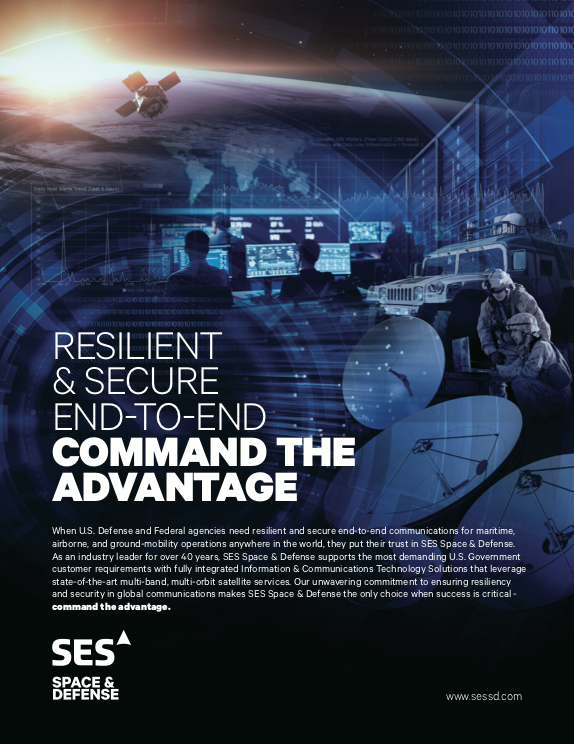How an exploit, buy, build strategy is fueling rapid, resilient acquisition
Brig. Gen. Timothy Sejba directs two diverse Space Systems Command (SSC) portfolios of more than 60 space programs. He serves as Program Executive Officer (PEO) for SSC’s Space Domain Awareness (SDA) and Combat Power office and for the Space Development Agency’s Battle Management, Command, Control, and Communications (BMC3) office.
Gen. Sejba oversees mission areas including space domain awareness, space control, strategic warning and surveillance, defensive cyber operations, innovation and prototyping, data transport, and operational and tactical command and control systems.
His responsibilities include approving program strategies, overseeing all aspects of his teams’ delivering programs to meet warfighter needs, and engaging with Headquarters United States Space Force (USSF), the Office of the Secretary of Defense, and other military forces, departments and government agencies.
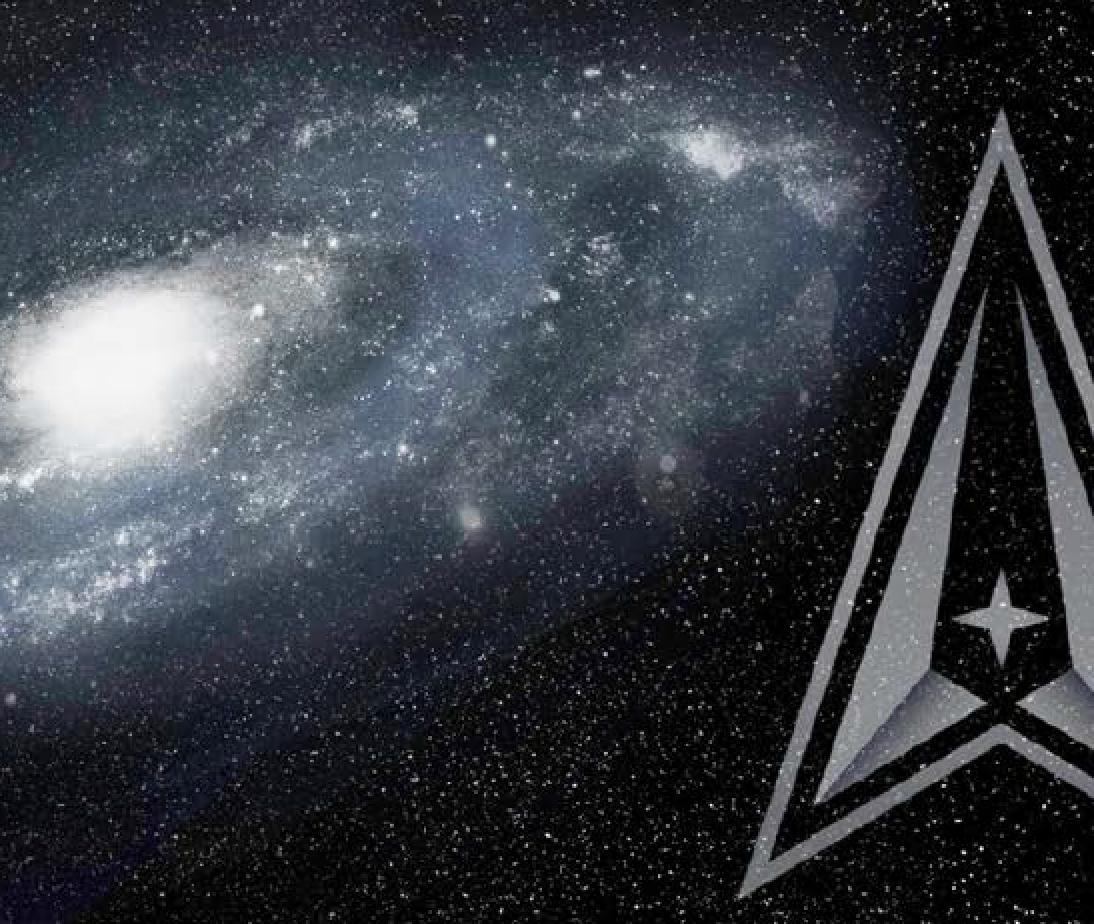
Recently, the general discussed recent successes, how space domain awareness (SDA) is changing, and what SSC is doing to meet the threats and become more resilient in protection our nation.
General, you are the PEO for SSC Space Domain Awareness & Combat Power and Battle Management Command, Control and Communications —how do those mission sets fit in with the USSF’s overall mission?
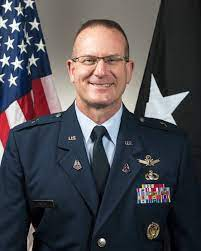
Brig. Gen. Timothy Sejba
Gen. Timothy Sejba
The Space Force is a military service whose mission is to defend U.S. and allied interests in space. For years, service and joint commanders have stated that space domain awareness (SDA) is their highest priority need.
Perpetual and prolific SDA is the foundational requirement to enable decisive action in the space domain. SDA is essentially how we ‘see and avoid’ in space — that is one of the major capabilities we provide.
Our nation recognized space as a vital U.S. national interest decades ago. Additionally, the increasing ability of nations such as China and Russia to hold our space assets at risk via counter-space weapons created the clear need for a military service dedicated to organizing, training and equipping forces for a contested space domain.
SSC develops and operates national security deterrence capabilities to provide continued sustainable use of space by countering threats and aggression and, when necessary, to prevail in a multi- domain conflict that extends to space.

We focus on quickly responding to warfighter requirements by designing, building and maintaining unrivaled offensive and defensive counter-space capabilities required for space superiority.
Space superiority means we can conduct operations in space at any time or any place without prohibitive interference from terrestrial or space-based threats.
Battle Management Command, Control and Communication contributes to the missions above by developing and fielding critical Operational Command and Control capabilities for a contested space domain. Space Command and Control provides capabilities that enable our warfighters to make timely, quality driven battlespace decisions for the space domain fight.
SSC’s portfolios are intertwined through key mission threads. I use the term intertwined purposely, and our Commander’s intent really centers around that philosophy — that the portfolios are tied together. They have a highly symbiotic relationship as both a prime contributor to and a prime recipient of the outputs and capabilities of each portfolio.

You recently spoke at Space Industry Days about Lt. Gen. Michael Guetlein’s new SSC Guiding Principles — Focus on the Threat; Exploit/Buy/Build; Unity of Effort and Build a Culture of Experts. Would you tell us more about the Exploit/Buy/Build investment strategy?
Gen. Timothy Sejba
‘Focus on the Threat’ is really where everything starts. While China and Russia are peer competitors — make no mistake about that — China is the pacing challenge. Rapidly evolving threat demanded a new approach to acquisition, so we will be ready for the fight tonight, the fight in 2026... and beyond.
‘Exploit What We Have’ means squeezing all the juice (mostly data) out of the systems we have online today for the ‘Fight Tonight’ scenario.
‘Buy What We Can’ is the cornerstone of going after the 2026 threat and involves everything from commercial purchases and services to commercial launch.
This concept involves transitioning dual-use technology that may have been developed for other industries, commercial ride shares — using excess capability on commercial satellites — and purchasing analytic services or new tools to maximize Guardian bandwidth.
Finally, ‘Build Only What We Must’ is our investment strategy for the future fight. In a contested environment, we need to design with resilience as a top priority.
Not all mission areas are mature enough to ‘buy’ or have stringent security or warfighter requirements that demand exquisite systems. This three-pronged approach ensures we are delivering resilient, warfighting capabilities for all aspects of the fight and delivering space superiority when it is most needed.

‘Unity of Effort’ ties everything together. Working alone cannot guarantee U.S. space superiority. Countering the threat demands a concerted, united effort from across the government, industry, academia, and our international partners.
Lastly, SSC is committed to ‘Building a Culture of Experts,’ to prepare the entire organization for the challenges that will come. That means building a diverse group of experts across all disciplines; having diversity of thought and a diverse workforce; being threat experts; and creating the environment where all of that can be enabled.
The 2026 threat challenge requires a short-term reliance on experts from sources I previously mentioned — government, industry, academia, and our allies. As we continue to grow and align with these experts, SSC is organized to pool expertise for end-to-end mission delivery.
What are some of your portfolio system in the field doing today to support Combatant Commands (CCMDs)?
Gen. Timothy Sejba
Our Space Domain Awareness (SDA) portfolio fields a broad set of capabilities which support numerous combatant
commands.
For example, we are responsible for a broad set of systems that monitor the space environment and watch objects in space, characterize what is happening, generate indications and warnings for anyone who might need to be made aware of a potential threat — nefarious or environmental, such as space debris — and ultimately enable U.S. Space Command’s operations.
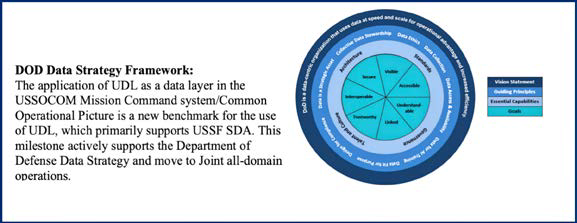
Our cyber operations division currently has two product lines satisfying defensive requirements for cybersecurity and national security called Manticore and Kraken.
Manticore is a suite of software tools that identifies and detects cyber activities. Kraken is a suite of software tools that protects and responds to cyber events.
Manticore and Kraken support Space Operations Command’s Space Delta 6 and its squadrons to protect their assigned mission systems, which support combatant commands.
Today, the capabilities we provide to cyber operators are protecting our mission systems through an enhanced cyber defensive posture.
Manticore is fielded on 11 United States Space Force (USSF) mission systems. Kraken is currently integrated on to two mission systems to establish a pattern-of-life baseline.
On the BMC3 side, in May of 2022, United States Special Operations Command (USSOCOM) operationally accepted our Unified Data Library (UDL) to track operations across the SOCOM enterprise and the real-time locations of their forces.

Brig. Gen. Sejba speaking at Space Industry Days on
Oct. 19, 2022, in Los Angeles. Photo by Van de Ha, SSC
As such, UDL is the first cloud-based U.S. Air Force / U.S. Space Force system to receive a three-year Authority to Operate at each classification level (Unclassified, Secret, Top Secret), an astounding testament to UDL’s solid security barriers.
Can you tell us about some of your recent successes in either portfolio?
Gen. Timothy Sejba
In April 2022, Space Operations Command accepted our Geosynchronous Space Situational Awareness Program (GSSAP) satellites 5 and 6 as operationally capable and has presented them to the U.S. Space Command for operational use... four months ahead of schedule.
Our expanded GSSAP constellation will allow for even more opportunity to respond to real-world threats. GSSAPs 5 and 6 launched from Cape Canaveral Space Force Station, Florida, last January.
GSSAP satellites collect space situational awareness (SSA) data that allows for more accurate tracking and characterization of man-made orbiting objects. GSSAP satellites operate near the geosynchronous belt and have the capability to perform Rendezvous and Proximity Operations (RPO).
RPO allows for the space vehicle to maneuver near a resident space object of interest, enabling characterization for anomaly resolution and enhanced surveillance, while maintaining flight safety.
Data from GSSAP uniquely contributes to timely and accurate orbital predictions, enhancing our knowledge of the geosynchronous orbit environment, and further enabling space flight safety to include satellite collision avoidance.

The Space Surveillance Telescope.
Image is courtesy of DARPA.
In September, the Australian Department of Defence and USSF declared initial operational capability for the Space Surveillance Telescope (SST) at Naval Communication Station Harold E. Holt, Exmouth, Western Australia.
The SST is a military telescope that provides ground-based, broad-area search, detection and tracking of faint objects in deep space to help predict and avoid potential collisions, as well as detect and monitor asteroids.
The SST will contribute to the U.S. Space Surveillance Network, a U.S. Space Command capability operated by the USSF to detect, track, catalog and identify artificial objects orbiting the Earth. The telescope’s strategic location in Australia provides unique space domain awareness coverage in the region.
We led this international partnership to move SST to Australia in the spirit of strengthening our allied partnerships while exploiting existing capabilities.
The space objects that SST locates are natural phenomena — asteroids and comets — as well as the growing problem of space junk. This collaboration is a win for both countries.
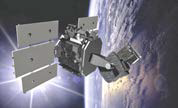
Artistic rendition of a Space Surveillance
Telescope on-orbit.
Image is courtesy of USSF.
What are the challenges to pivot the Space Domain Awareness mission in a congested and contested environment?
Gen. Timothy Sejba
Today’s threat environment feels reminiscent of the Cold War, when the Soviets fielded significant counterspace capabilities. It stressed our then-SSA operators and demanded urgency of understanding the environment should a response be required.
Unfortunately, over time, we lost our way a bit as part of the Post-Cold War Peace Dividend. SSA became synonymous with catalog maintenance and time, criticality, took a back seat to catalog accuracy.
We’ve rebranded SSA to Space Domain Awareness to re-emphasize threat mindedness. We must know not only where objects are in space but also what they might be doing, what their capabilities might be, what their patterns of life are, what their operational states are.
USSF Chief of Space Operations, General Saltzman, has coined this type of SDA as “Combat SDA” — the level required for the joint fight.
As the lead acquirer of SDA capabilities, we must deliver what is required to enable Combat SDA.
We must field systems that eliminate our adversaries’ freedom of action.
We must ensure all relevant data is available to warfighters and systems on tactically relevant timelines.
We must work with the Department of Commerce so some workload can be offloaded allowing our warfighters to focus on supporting the joint fight.

The U. S. Space Force successfully launched the Tactically
Responsive Launch-2 (TacRL-2) mission on a Northrop
Grumman Pegasus XL rocket from Vandenberg Space
Force Base T, delivering a technology demonstration
satellite to LEO.
The bottom line is that the SDA community is evolving in many ways.
Please tell us about SDA and Combat Power’s role in the emerging Tactically Responsive Space (TacRS) mission area?
Gen. Timothy Sejba
First, TacRS is all about rapidly responding to on-orbit threats and augmenting existing capabilities.
For example, deterrence today can only succeed if our adversaries find our TacRS capability credible enough to enable military operations even in a contested environment.
Our peer adversaries must know the U.S. will retain superior warfighting capability, even after an attack — TacRS is a key capability in the concept.
SSC’s Space Safari group and Assured Access to Space (AATS) program office partner aggressively on the TacRS challenge.
We’re opening the aperture and changing the focus from TacRL (launch) to the broader TacRS mission area.
End-to-end capability requires more than just launch — Space Safari responds to high-priority, urgent space needs in support of USSPACECOM and other combatant command requirements.

Brig. Gen. Sejba, standing next to the bronze statue of Gen. Bernard
A. Schriever in the Space Systems Command courtyard.
SSC photo by Van de Ha
They use mature technology and existing production lines to quickly repurpose assets from multiple organizations.
TacRL-2, successfully launched in June of 2021, was able to turn around a launch within 11 months, as opposed to the previous average of two to five years.
Today, the benchmark for typical mission timeline is less than 12 months (from initiation through launch) and in 21 days or less from decision to launch to an asset being on-orbit... but that’s not good enough.
We are leaning further forward to execute the next rapid response mission in 2023 — VICTUS NOX (Latin for “conquer the night” ) will perform an SDA mission from LEO.
This will be an operational demonstration against an operationally relevant threat using operational crews on operationally relevant timelines.
The SSC Commander, Lt. Gen. Guetlein, has stated the operationally relevant timeline for the next mission will feature an attempt to launch a satellite within 24 hours of receiving the “go” order.
Those are our marching orders, and we are getting after the solution.
What are some of the cyber challenges SSC is facing?
Gen. Timothy Sejba
Much of the American way of life depends on computers, data — and that’s just one more avenue our adversaries are pursuing to deny, degrade and destroy U.S. space assets.
I previously mentioned our Manticore and Kraken cyber programs, but on a broader front, cyber defense is a requirement across the military’s entire space architecture, On-orbit and on the ground.
If we’re going protect and defend the architecture, it can’t just be something we do against the space threat. It has to be against the holistic threat of both space and cyber.
Defensive cyber operations and capabilities are part of our portfolio. We protect and defend the entire mission and the architecture against threats from both.
At SSC, that means we’re focused on everything from making sure we have the best-trained cybersecurity experts, to making sure our systems are resilient enough to withstand a variety of cyberattacks.
We are also teaming with our commercial partners and allies to ensure the systems we build and put into place are cybersecure.

We also leverage talent from DEFCON to bolster defensive practices in software development. DEFCON is the largest and longest running security research and hacking convention in the world.
This non-traditional approach leverages talents of academia, industry, and researchers across the globe by hosting an open competition.
DEFCON’s “capture the flag” style competition uses representative ground and space infrastructure. Captured competitor tactics, techniques and procedures enhance the defensive postures for our critical space systems.
Finally, General, what’s one thing you think people may not know about USSF/ SSC that you’d like them to know?
Gen. Timothy Sejba
I firmly believe that many Americans lack full awareness of two import facts.
First, Space is fundamental to U.S. prosperity. The United States harnesses the benefits of space for communications, financial transactions, public safety, weather, agriculture, navigation and more.
Space enables the modern world, and the United States needs to maintain its progress in this critical domain if it hopes to lead in the future.
When most Americans think of space, they think of NASA and space exploration, but they don’t necessarily think of all that space brings to their daily lives.
Every day, on countless occasions, billions of people are either directly interacting with or benefiting from a space asset. GPS, weather forecasts, gas station pumps, contactless credit cards, ATMs, satellite phone services, broadband internet services and countless more daily parts of our lives rely on information transmitted through the space domain via satellite.

The application on a hand-held device that gives directions, calls a rideshare or locates a lost package is enabled by the GPS constellation operated by the U.S. Space Force.
Second, the challenges to U.S. space leadership are real. China and Russia view space as vital to modern warfare and the U.S. and allied economies.
Those nations have developed counterspace capabilities to deny our access and diminish our military and economic effectiveness through space. Hence, space must be thought of as a warfighting domain just like air, land, sea and cyber.
Let me be very clear — we do not want a conflict that extends into space. We must be capable of fighting and winning if that conflict is to occur.
Space Systems Command (SSC) is the U.S. Space Force field command responsible for rapidly developing, acquiring, equipping, fielding and sustaining lethal and resilient space capabilities. SSC mission capability areas include launch acquisition and operations, communications and positioning, navigation and timing (PNT), space sensing, battle management command, control and communications (BMC3), and space domain awareness & combat power. SSC is headquartered at Los Angeles Air Force Base in El Segundo, California.
Contact Space Systems Command at
SSC@spaceforce.milfollow on LinkedIn.


